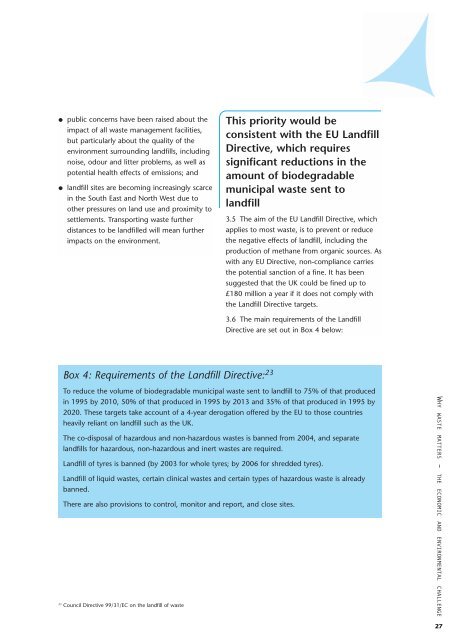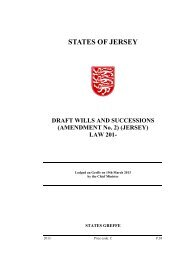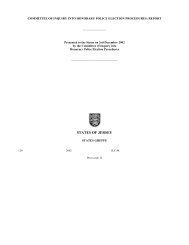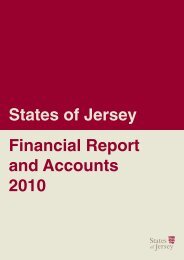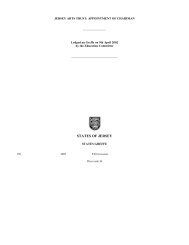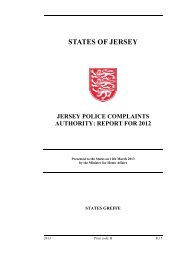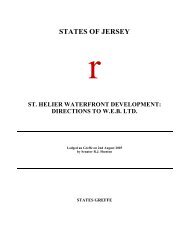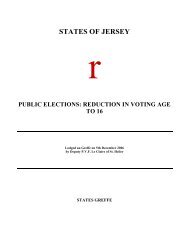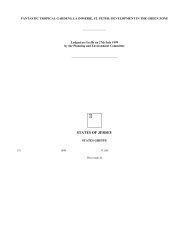Waste not want not - States Assembly
Waste not want not - States Assembly
Waste not want not - States Assembly
Create successful ePaper yourself
Turn your PDF publications into a flip-book with our unique Google optimized e-Paper software.
●<br />
●<br />
public concerns have been raised about the<br />
impact of all waste management facilities,<br />
but particularly about the quality of the<br />
environment surrounding landfills, including<br />
noise, odour and litter problems, as well as<br />
potential health effects of emissions; and<br />
landfill sites are becoming increasingly scarce<br />
in the South East and North West due to<br />
other pressures on land use and proximity to<br />
settlements. Transporting waste further<br />
distances to be landfilled will mean further<br />
impacts on the environment.<br />
This priority would be<br />
consistent with the EU Landfill<br />
Directive, which requires<br />
significant reductions in the<br />
amount of biodegradable<br />
municipal waste sent to<br />
landfill<br />
3.5 The aim of the EU Landfill Directive, which<br />
applies to most waste, is to prevent or reduce<br />
the negative effects of landfill, including the<br />
production of methane from organic sources. As<br />
with any EU Directive, non-compliance carries<br />
the potential sanction of a fine. It has been<br />
suggested that the UK could be fined up to<br />
£180 million a year if it does <strong>not</strong> comply with<br />
the Landfill Directive targets.<br />
3.6 The main requirements of the Landfill<br />
Directive are set out in Box 4 below:<br />
Box 4: Requirements of the Landfill Directive: 23<br />
To reduce the volume of biodegradable municipal waste sent to landfill to 75% of that produced<br />
in 1995 by 2010, 50% of that produced in 1995 by 2013 and 35% of that produced in 1995 by<br />
2020. These targets take account of a 4-year derogation offered by the EU to those countries<br />
heavily reliant on landfill such as the UK.<br />
The co-disposal of hazardous and non-hazardous wastes is banned from 2004, and separate<br />
landfills for hazardous, non-hazardous and inert wastes are required.<br />
Landfill of tyres is banned (by 2003 for whole tyres; by 2006 for shredded tyres).<br />
Landfill of liquid wastes, certain clinical wastes and certain types of hazardous waste is already<br />
banned.<br />
There are also provisions to control, monitor and report, and close sites.<br />
23<br />
Council Directive 99/31/EC on the landfill of waste<br />
WHY WASTE MATTERS – THE ECONOMIC AND ENVIRONMENTAL CHALLENGE<br />
27


